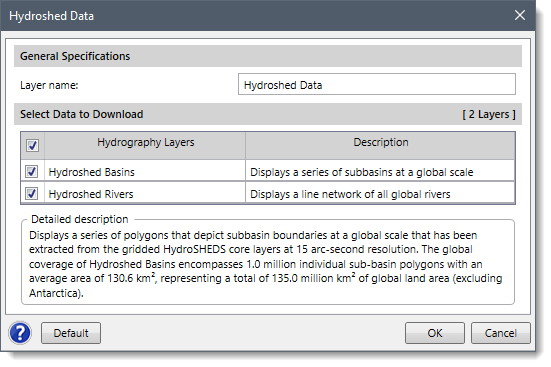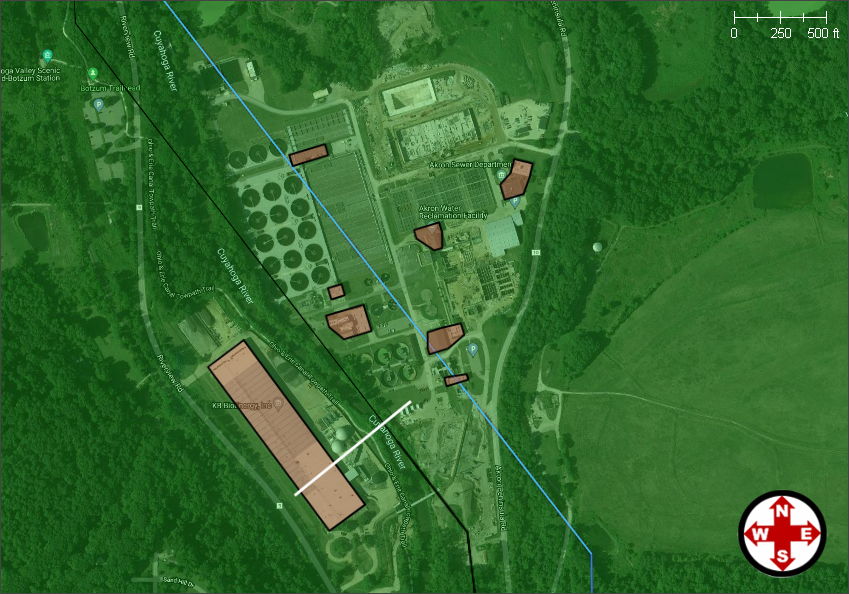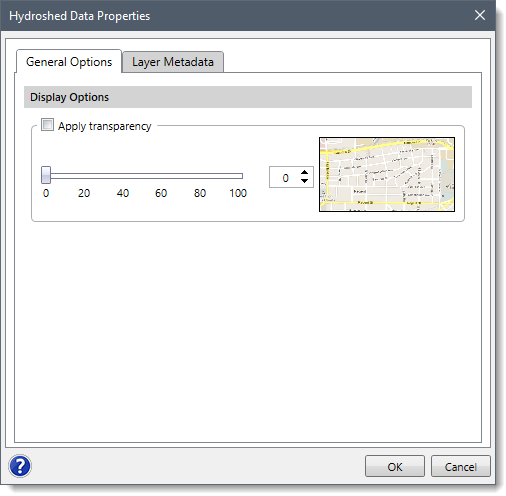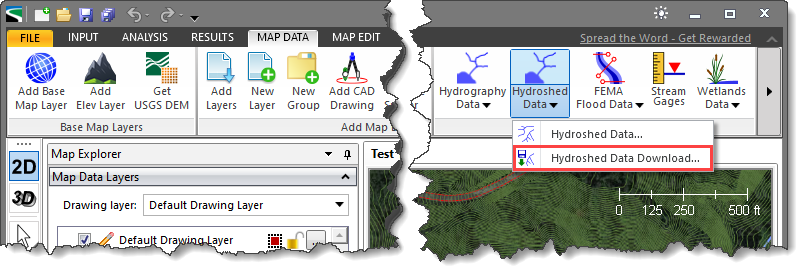The Hydroshed Data command of CivilGEO software allows the user to display the watersheds, lakes, rivers, streams, and subbasins data on the Map View.
The Hydroshed Data command retrieves its data from HydroSHEDS (Hydrological data and maps based on SHuttle Elevation Derivatives at multiple Scales) data store. HydroSHEDS provides hydrographic information in a consistent and comprehensive format for all parts of the world. The available data provides geo-referenced data sets (vector and raster) at various scales, including stream networks, watershed boundaries, drainage directions, and ancillary data layers such as flow accumulations, distances, and river topology information.
The HydroSHEDS data is derived primarily from elevation data of the Shuttle Radar Topography Mission (SRTM) at 3 arc-second resolutions. However, for all areas of the USA, the Hydroshed Data command bypasses the HydroSHEDS data store and provides more detailed and accurate information from the USGS NHDPlus HR (High Resolution) data store, which was developed by integrating the high-resolution National Hydrography Dataset (NHD) and Watershed Boundary Dataset (WBD) data with 3D Elevation Program (3DEP) 10-meter digital elevation model (DEM) data.
HydroSHEDS has been developed by the Conservation Science Program of the World Wildlife Fund (WWF), in partnership or collaboration with the U.S. Geological Survey (USGS); the International Centre for Tropical Agriculture (CIAT); The Nature Conservancy (TNC); the Government of Australia; McGill University, Montreal, Canada; and the Center for Environmental Systems Research (CESR) of the University of Kassel, Germany.
Displaying Hydroshed Data on the Map View
Follow the steps below to use the Hydroshed Data command:
- From the Map Data ribbon menu, click the Hydroshed Data dropdown menu and select the Hydroshed Data command.

- The Hydroshed Data dialog box will be displayed.

The following sections describe the Hydroshed Data command and how to interact with the above dialog box.
General Specifications
This section allows the user to provide a name for the layer group in the Layer name field. This name identifies the layer group that will be created in the Map Data Layers panel and will contain the downloaded Hydroshed layers. By default, the layer name is set to Hydroshed Data, which can be changed by the user.
Selecting Data to Download
The Select Data to Download section allows the user to choose the hydrography data layers that will be displayed on the Map View. In addition, every hydrography layer consists of a corresponding short description under the Description column. The user can use the provided default selection as these are typical options used. However, the user can experiment with the various options to customize which hydrography layers will be loaded and displayed on the Map View.
To return to the default settings, click the [Default] button.
After all the options have been defined, click the [OK] button, and the software will load and display the selected hydrography layers on the Map View.

The software will then place the created hydroshed data layer in the Map Data Layers panel.

Clicking on the […] button adjacent to the created hydroshed data layer will display the Hydroshed Data Properties dialog box, which allows the user to change the image’s transparency and copy layer metadata text on the clipboard.

Downloading Hydroshed Data as Shapefile Data
The Hydroshed Data dropdown menu contains one additional command: Hydroshed Data Download.
 This command allows the user to download the watersheds, lakes, rivers, streams, and subbasins data as shapefile data. To learn more about this command, refer to this article in our knowledge base.
This command allows the user to download the watersheds, lakes, rivers, streams, and subbasins data as shapefile data. To learn more about this command, refer to this article in our knowledge base.
